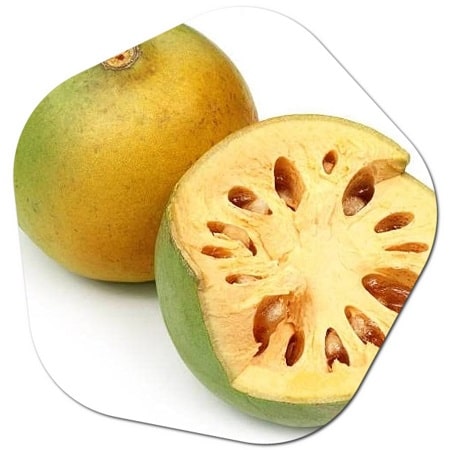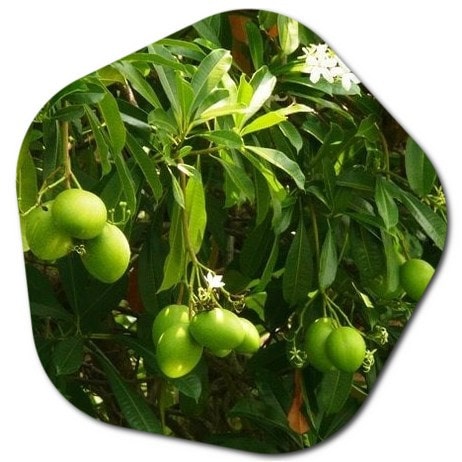What is the Aegle fruit? Where does the Aegle tree grow?
A bael fruit, also known as a wooden apple, is a fruit native to India. Considered sacred by Hindus, bael fruit can also be consumed in dried and powdered form. This fruit grows on trees and is sweet and aromatic. It is used dried, fresh or dried and then powdered. The powdered form is generally preferred for its health benefits. The fruit can also be juiced when fresh. The fruit is considered sacred in certain parts of India, and consumption in very large quantities can bring certain risks.
Bael Nutritional Values; Bel fruit is very rich in vitamin A, vitamin C, potassium and antioxidants. It contains some protein and very little fat. It is a low-calorie fruit rich in fiber. Bael fruit is an excellent source of riboflavin. For a 100 gram serving of fruit: Calories : 88 Fat : 0.3g Carbohydrate : 32g Fiber : 2.9g Protein: 1.8g Vitamin C : 8.7mg Vitamin A : 56 mcg Riboflavin : 1.19mg.

The Aegle marmelos, commonly known as bael or Bengal quince, is a fruit-bearing tree native to the Indian subcontinent.
Aegle Fruit (Bael Fruit):
- Appearance: The Aegle fruit is typically round and has a woody shell that is difficult to crack open. The shell is hard and woody, and the inner pulp is aromatic and sweet.
- Taste: The pulp of the bael fruit is sweet, aromatic, and somewhat mucilaginous. It has a flavor that is a combination of citrus and floral notes.
- Use: The Aegle fruit is commonly used in traditional medicine and culinary applications. The pulp is often extracted and used to make beverages, jams, or added to desserts.
- Medicinal Uses: In traditional medicine, various parts of the bael tree, including the fruit, are used for their potential health benefits. The fruit is believed to have digestive and medicinal properties.
Aegle Tree (Bael Tree):
- Scientific Name: Aegle marmelos.
- Distribution: The bael tree is native to the Indian subcontinent, including India, Bangladesh, Sri Lanka, and Pakistan. It is also found in Southeast Asian countries.
- Habitat: Bael trees are well adapted to a range of climates, including dry and arid regions. They are often found in tropical and subtropical environments.
- Growth Characteristics: The tree is medium to large in size, with a straight trunk and a spreading canopy. The leaves are alternate, trifoliate, and aromatic.
- Flowers: Bael trees produce fragrant flowers that are greenish-white and have a sweet aroma. The flowers are usually unisexual.
- Fruit Production: The Aegle tree produces the bael fruit, which is about the size of a large grapefruit. The fruit has a hard and woody outer shell that protects the sweet and aromatic pulp.
- Cultural Significance: The bael tree is considered sacred in Hinduism and is often found near temples. The leaves, fruits, and roots are used in various religious rituals.
- Propagation: The bael tree is commonly propagated by seeds. It is also grown for its medicinal and cultural significance.
The Aegle tree, with its bael fruit, holds cultural, religious, and medicinal importance in various regions where it is found. The fruit is not only valued for its flavor but also for its potential health benefits
Which part of Aegle Marmelos is edible?
In the Aegle marmelos, commonly known as bael or Bengal quince, the edible part is primarily the pulp of the fruit. The bael fruit has a hard, woody shell that is challenging to open. Once opened, the aromatic and sweet pulp inside is what is consumed. The pulp is typically orange or yellowish and has a flavor that is a combination of citrus and floral notes.
Here’s how the consumption of bael fruit usually works:
- Extraction of Pulp: The hard outer shell is carefully broken open, revealing the aromatic pulp inside.
- Consumption: The sweet and aromatic pulp is eaten directly, and it is often used to make beverages, jams, or added to desserts.
- Beverage Preparation: One common use is to extract the juice from the pulp, and this juice is consumed as a refreshing drink. It can be mixed with water, sweetened, and sometimes flavored with spices for added taste.
- Culinary Uses: The pulp may also be used in culinary applications, such as making chutneys, jams, or incorporating it into various traditional recipes.
The seeds and other parts of the bael fruit, including the tough outer shell, are typically not consumed due to their hard and inedible nature. The focus is on the sweet and aromatic pulp, which is the most prized and utilized part of the fruit. Additionally, the leaves of the bael tree are sometimes used in traditional medicine and may have certain medicinal properties.
Aegle Marmelos (bael) benefits)
Hemorrhoids and Vitiligo Treatment
Thanks to the immature bael fruit extract, you can get rid of vitiligo and hemorrhoids. There are benefits of bael fruit for those with anemia problems and ear and eye disorders.
Bael Fruit for Stomach Problems

Bael fruit, which contains antioxidants for stomach problems such as ulcers and gastritis, adjusts the balance of stomach acid. It is good for ulcers with stomach and stomach problems.
Bael fruit can be used for respiratory ailments using oil. In cases such as asthma and colds, the oil of bael fruit can be used as a very healing oil. You can prevent constipation by consuming bael fruit, which is also good for constipation problem.
Bael fruit, which is rich in lactacids, helps to balance sugar in diabetes.
End Your Cholesterol Problem
For the stabilization of cholesterol, bael leaf extract controls cholesterol levels.





